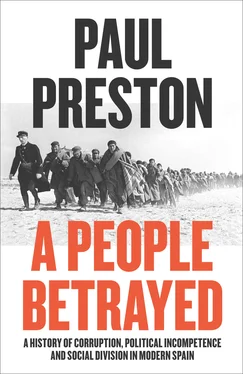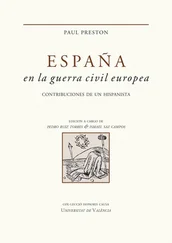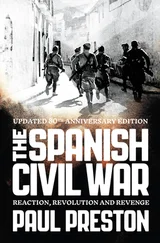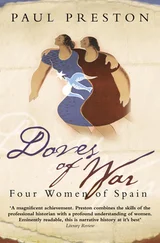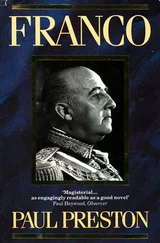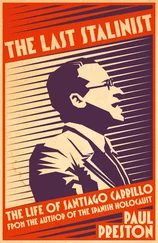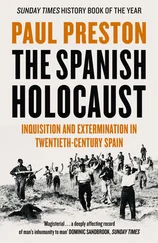In the words of James Joll, the Mano Negra ‘may never have existed outside the imagination of the police, who were always ready to attribute isolated, unconnected acts of violence to a single master organization’. Nevertheless, it is certainly the case that in 1880 some member organizations of the FTRE had agreed to carry out reprisals against the owners. By the spring of 1883, as a result of indiscriminate arrests of members of workers’ societies and readers of (legal) anarchist newspapers, 5,000 prisoners were being held in Cadiz and Jerez. Little or no distinction was made between union activity and crime as confessions of membership of the Mano Negra were extracted by torture. The FTRE denied the existence of the Mano Negra and accused the government of concocting a supposed revolutionary organization out of unconnected criminal elements. In fact, it seems that, while there may possibly have existed since the late 1870s a small criminal mafia called the Mano Negra, the link between it and the transparent and moderate FTRE was an invention to justify the repression of the rural labourers’ movement. Indeed, documents produced at the trial of its supposed members in the summer of 1883 revealed that the decisive ‘proof’ of the existence of Mano Negra just happened to have been provided by the commander of the Jerez garrison of the Civil Guard who had conveniently stumbled across a copy of this secret society’s written constitution under a rock in the countryside. Many were sentenced to life imprisonment, which meant confinement in filthy dungeons, and seven were publicly executed by garrotte in June 1884.16 The repression decimated the membership of the FTRE to the extent that, at a congress held in Valencia in September and October 1888, it was dissolved.17
The Spanish Socialist Party, the Partido Socialista Obrero Español (PSOE), was founded in 1879 but constituted little challenge to the anarchist movement. Its trade union strength was largely in the printers’ union in Madrid, the Asociación General del Arte de Imprimir, and the textile union in Barcelona known as the Tres Clases de Vapor. The party’s founder, Pablo Iglesias, admitted that, in the 1880s, the PSOE had only around 200 members. Rigidly Marxist, the PSOE leadership both refused alliances with bourgeois republicans and rejected the violent revolutionism of the anarchists. It thus remained isolated. It was not until 1886 that its newspaper El Socialista was published and only in 1888 that its trade union, the Unión General de Trabajadores (UGT), was established in Barcelona. So poor was its development that, in 1899, its headquarters were moved to Madrid. The key to the strategy adopted by Pablo Iglesias was to achieve political power by electoral means which rendered questionable the refusal to make alliances with the liberal republicans. For Pablo Iglesias, the purpose of strikes was not revolutionary but reformist, the improvement of working conditions, and thus insufficiently combative to attract workers in the miserable conditions of late nineteenth-century industrial Spain. By the end of the decade, the UGT was acquiring substantial support in the mining districts of the Basque Country and Asturias.18
Throughout the 1880s, and indeed beyond, the much larger anarchist movement was divided on tactics and strategy. Broadly speaking, on the one hand, there were the so-called collectivists who favoured the building of economic power through legal trade union activity that could eventually implement the social revolution. On the other, there were the so-called communists, who rejected this reformism as consolidating the capitalist system. In its stead, they advocated revolutionary violence. To replace its collectivist ideology, relative moderation and reliance on legal methods, there was emerging a more individualistic anarchism committed to ‘propaganda by the deed’ carried out by fragmented clandestine cells or ‘affinity groups’ such as those advocated by Los Desheredados.19
Strikes and demonstrations started to give way to acts of terrorism. As anarchism took ever deeper root in the small workshops of the highly fragmented Catalan textile industry, there was a wave of bomb outrages that provoked savage and indiscriminate reprisals from the forces of order. Between June 1884 and May 1890, there were twenty-five bomb incidents in Barcelona. The most frequent incidents came as a result of labour disputes and targeted factories, the homes of the managers or the owners, the offices of the industrialists’ association, the Foment del Treball Nacional, and police stations. There were three fatalities and many injured. From 1890 to 1900, there would be another fifty-nine incidents which caused a further thirty-five deaths. The worst years in terms of violence would be those between 1893 and 1896. The intensification of social violence was not simply a result of the ideology of anarchist revolutionaries. Their ideas spread in the fertile soil of a Catalonia experiencing a profound process of social and economic transformation. Rural workers were being attracted to Barcelona and other cities by the growth of industries, especially in textiles. The recent arrivals, relying on insecure work, were forced to live in appalling shanty towns of unhygienic hovels without basic sanitation or adequate nutrition, resulting in high levels of infant, and indeed adult, mortality. Moreover, there was no schooling available for their children. Radicalization, similar to that taking place in France and Russia, was facilitated by the recent invention of dynamite which was available for purchase without restriction in Barcelona. It was not uncommon in the taverns of the poorer parts of Barcelona to encounter men passing the hat for ‘a few pence for dynamite’.20
The social conflicts deriving from the painfully slow but inexorable progress of industrialization matched those arising in the southern countryside from the brutal social injustices intrinsic to the latifundio economy. The rural proletariat existed on the most meagre subsistence diet. There was rarely more than one meal per day, and it was usually poor-quality bread and gazpacho, a soup made from tomatoes, onions, cucumber, peppers and garlic. Such a diet never contained more than secondary sources of protein, since meat, fish and eggs were beyond the means of the day labourer. A common cold could be disastrous.21 The 1890s were a period of economic depression which exacerbated the grievances of the lower classes, both in the urban slums and in rural areas.
The misery of the southern peasantry was the motive force behind direct action. The indiscriminate repression unleashed in the midst of the Mano Negra panic fostered the belief that any direct action up to and including individual terrorism was licit against the tyranny of the state. In a context of poor harvests with the consequent price inflation and mass unemployment, there were increasing levels of social violence in the form of sporadic estate occupations, thefts of livestock and grain and attacks on owners and estate managers. In late 1891, a building worker from Madrid, Félix Grávalo ‘El Madrileño’, preached anarchist ideas in the villages surrounding Jerez. Among his disciples grew the naive idea of seizing Jerez in order to create an anarchist stronghold as the first step to taking control of the entire province of Cadiz. On the night of 8 January 1892, more than 500 braceros from Arcos de la Frontera, Ubrique, Trebujena, Sanlúcar de Barrameda, El Puerto de Santa María and other towns in Cadiz and Lebrija in Seville, gathered on the outskirts of the city. Armed only with sickles, scythes, pitchforks and sticks but driven by hunger, they invaded the city centre. In part, they were intending to free dozens of workers recently imprisoned after the Mano Negra trials. Their battle cry was ‘Brothers, we are coming for you!’ However, parallel uprisings in several other towns of the province of Cadiz suggested Grávalo’s wider revolutionary purpose. The braceros briefly held Jerez, although their belief that the local military garrison would join them was entirely misplaced. Their triumph was short-lived and the police swiftly regained control. Two innocent passers-by, a commercial traveller and an office worker, had been killed by elements of the mob in an outburst of class hatred. Because they were well dressed and wore gloves, they had been assumed to be ‘oppressors’.22 Fear of the spectre of revolution provoked by the Jerez events ensured that the consequent repression would be severe and extend right across western Andalusia. In subsequent military trials, despite lack of concrete evidence, other than the testimony of Grávalo obtained under duress, four labourers were condemned to life imprisonment. Four more were sentenced to death and executed by garrotte in the market place of Jerez.23
Читать дальше
